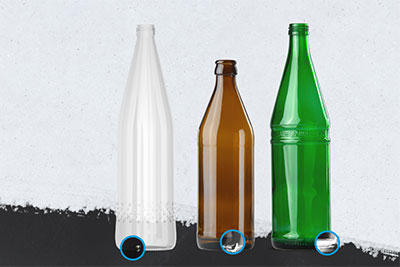HEUFT X-ray technology – Part 6: exactly the right choice?
Part 6 of our X-ray series explains the procedure for a significant qualification of the X-ray detection performance when selecting suitable inspection systems for filling and packaging lines.
The right X-ray system which meets your safety and quality requirements on site exactly and also provides the necessary detection and rejection reliability. Many claim to be able to deliver something like this. But the pulsed radiometric technology for, among other things, a careful and precise foreign object detection is only found in the modular X-ray inspectors from HEUFT. It is very likely that one of them is really the right one for you and your specific requirements. However this only really becomes apparent when qualifying the detection performance. The comparability needed in order to make the best choice for maximum product safety can only be established in this way.
A qualification process is used as a second important step immediately after the HACCP risk analysis and the determination of critical control points for ensuring production quality in order to find the best system for the continuous monitoring of such CCPs in the first place. The future user defines a detailed requirement profile for this purpose which functions as the specifications for the machine manufacturer. It also forms the basis for researching and preselecting potentially suitable solutions. It then has to be checked whether they will actually be able to do what they are supposed to do during future practical operation. This applies to all processes, components and functions – and above all to the specified detection performance.

Ensuring practical suitability
After all the qualification process should show, among other things, whether the inspection devices to be tested will actually find exactly what they are supposed to find later in daily operation e.g. glass or metal foreign objects of a very small size as defined by the internal quality assurance department. It provides documented proof based on a detailed risk analysis not only in this respect. However this does not work with checks on a random basis but only with extensive practical tests under conditions which are as close as possible to real operation.
The necessary prerequisites for this are created during the qualification process for X-ray inspectors which HEUFT carries out in close cooperation with its customers on its own spacious premises: the corresponding HEUFT eXaminer II system is always integrated into a genuine rotary machine with realistic conveyor mechanics (including a rejection system with reject verification) instead of testing it superficially as a stand-alone device. It is not only necessary to prove that different types and sizes of foreign objects as well as all other safety and quality risks determined in the specifications are identified clearly – the reliable removal of the products and packaging materials in question from the production flow is just as important.

Evaluating realistically
And all this independent of the respective transport speed! Therefore the detection and rejection reliability is not only checked with regard to the targeted maximum line output but also with fluctuating belt speeds. Specially prepared test containers are used for this. And always the same test set for each individual format in order to be able to evaluate each brand individually and comprehensively. All the critical container areas are provided with typical, standardised faults for this.
HEUFT also attaches great importance to being true to reality in this case: the packaging material is also prepared with "true to life" faults such as glass fragments or tiny splinters instead of only using glass or metal balls of defined sizes the way others do in order to check the detection performance when tracking down foreign objects. Even real foreign objects found during actual operation can be used. It is also essential to determine the false rejection rate, namely the proportion of incorrectly rejected good products, particularly in the case of variations in product and packaging. Finally after installation and commissioning only those products should be removed from the line which are really no longer marketable in order to avoid the wastage of packaging and food and to ensure a high level of productivity.

Testing the overall performance
It is not only the one or other function which has to be rigorously examined and evaluated as part of the device qualification process but the entire performance of the complete solution. And that under the same conditions and prerequisites which are as realistic as possible. This is a matter of course for HEUFT. Filling and packaging companies should already ensure that other suppliers also meet these criteria when researching and preselecting X-ray inspectors. This is the only way to create the comparability needed in order to really make the right choice. And the basis for an installation qualification process as a prerequisite for technical acceptance along the line on site as well as validation of the required performance during operation. Both will be examined in more detail in the next part of our X-ray series.





